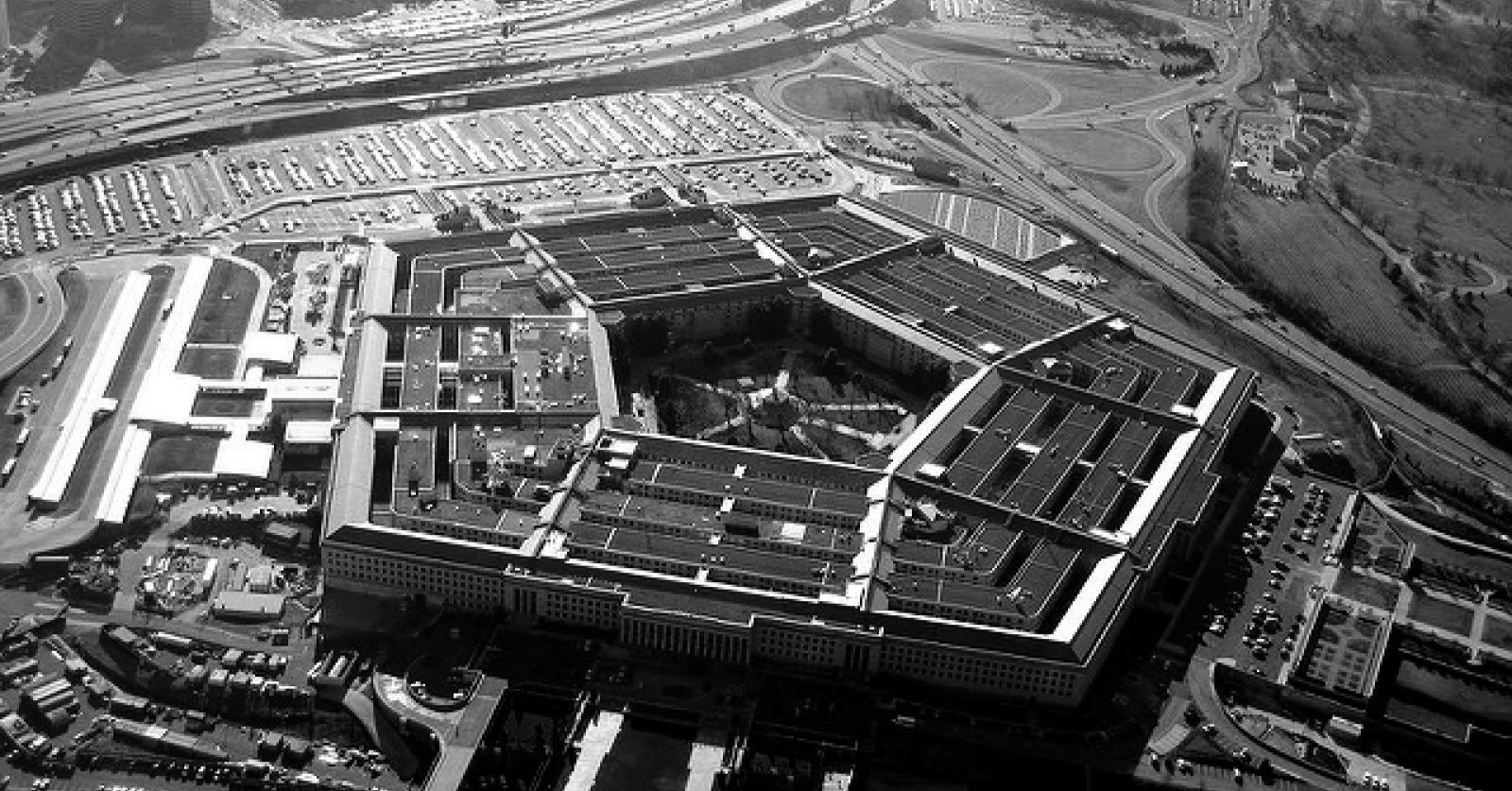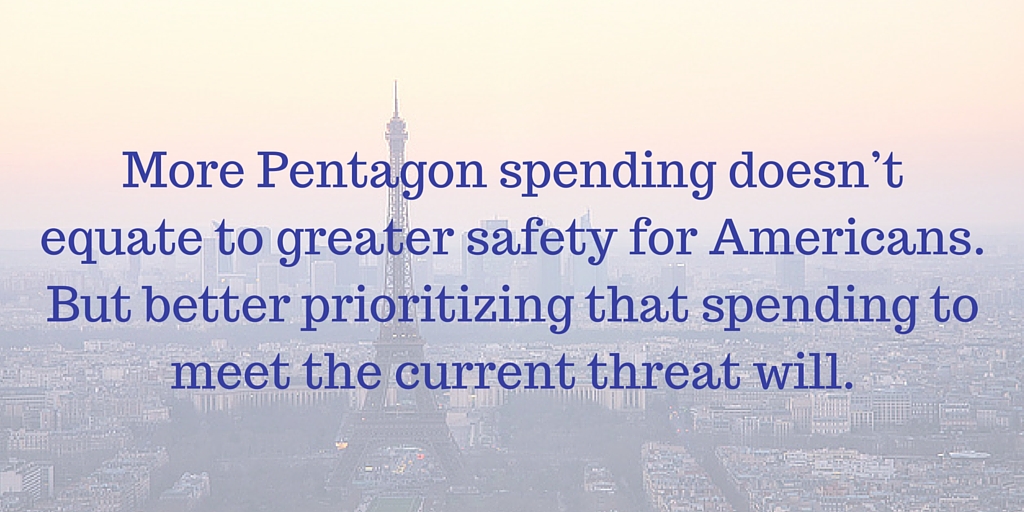
Pentagon bureaucracy has kept us from fully adapting to counter constantly-changing terrorist tactics. It’s time to reorient Pentagon priorities.
It’s been a week since the terror attacks in Paris. Attacks like these strike at our core; they happened at locations we like to believe are safe. Places we take our families. Where anyone might go to unwind at the end of the work week. After last week it’s much harder for the average person to say, “That can’t happen to me.”
This renewed and heightened awareness of the risks of terrorism should trigger a debate about our priorities for Pentagon spending. We want to believe we can protect ourselves, and our families, by maintaining a robust military. If the U.S. is a formidable adversary, this line of thinking goes, no rational leader in any other country will dare attack us. This assumes all our adversaries are other countries with traditional leadership. Not true in this case. But it also assumes the old paradigm of “peace through strength” still holds. Clearly, it doesn’t. Even in the U.S., with military spending above $600 billion per year, we aren’t immune from terrorist attacks.
After more than a decade of war and hundreds of billions spent, we still have to fear a handful of zealots. What was stated as far back as January, 2001 in the USS COLE Commission Report still holds true: the U.S. must “gain the initiative over a very adaptive, persistent, patient and tenacious terrorist.”
At TCS we believe not a single dollar of federal spending should be wasted. More Pentagon spending doesn’t equate to greater safety for Americans. But better prioritizing that spending to meet the current threat will. That doesn’t mean ignoring China or Russia, but it does mean making tough choices about resources and what would be the most effective. To that end:
Modernizing the U.S. nuclear arsenal won’t keep us safe from terrorists.
The U.S. is at the leading edge of a plan to modernize all three legs of the nuclear triad – land, sea, and air. The Congressional Budget Office estimates the cost of this modernization, as well as maintaining current systems, to be at least $355 billion over just the next decade. Another CBO estimate is that modernizing the sea-based deterrent by replacing the OHIO class submarine will cost at least $92 billion. Let’s point out the obvious here: we aren’t going to use nuclear weapons against terrorists. (And pretending it costs less by moving the money out of the Navy’s accounts and putting it in a “National Sea-based Deterrence Fund” doesn’t work either.) We must rethink the triad and how much is spent on modernization.
The F-35 won’t keep us safe from terrorists.
Terrorists don’t fly tactical fighter jets. They aren’t planning to beat us in a dogfight. And while the September 11th terrorists used commercial airliners, look again at what the COLE Commission said; terrorists are adaptive. They plan, they strike, and they move on to an entirely new set of tactics. Unfortunately, the U.S. military lags behind the terrorists in adaptability. And spending more than a trillion dollars on buying and sustaining the F-35 for the next 50 years won’t make us one bit safer from the kind of attacks that happened in Paris. But we can pursue less expensive alternatives that will be effective and maintain the U.S. position as the world’s premier air power.
Playing games with the Pentagon budget won’t keep us safe from terrorists.
The last five years have seen a disturbing rise in the number of budget gimmicks the Congress has applied to the Pentagon budget. Besides the National Sea-based Deterrence Fund, there is also the off-budget Overseas Contingency Operations (OCO) account. And while a properly controlled and vetted use of the OCO account should be for exactly this kind of emerging contingency, Congress has turned it into nothing more than a slush-fund to avoid the budget caps. And press this week suggests they’ll be using the most recent attacks to pump more money into this largely unaccountable fund.

It’s time for the Congress to recognize what former Chairman of the Joint Chiefs General Martin Dempsey said in his foreword to The National Military Strategy in June of this year.
“Today’s global security environment is the most unpredictable I have seen in 40 years of service. … We now face multiple, simultaneous security challenges from traditional state actors and transregional networks of sub-state groups – all taking advantage of rapid technological change.”
There are plenty of ways the U.S. Government can use taxpayers’ money to heighten our safety: Special Operations forces, counter terrorism programs, anti-terrorism and force protection programs, and intelligence gathering in all its many forms. Let’s re-emphasize these programs and de-emphasize spending on nuclear weapons and conventional programs that will never be used against the terrorists.
The old ways of doing business in the Congress, larding up the Pentagon policy and funding bills with Congressional prohibitions on ending programs the Pentagon no longer wants or needs, and refusing to recognize the current threat environment is a disservice to our troops. Spending more won’t make us safer, but spending smarter will make us stronger.










